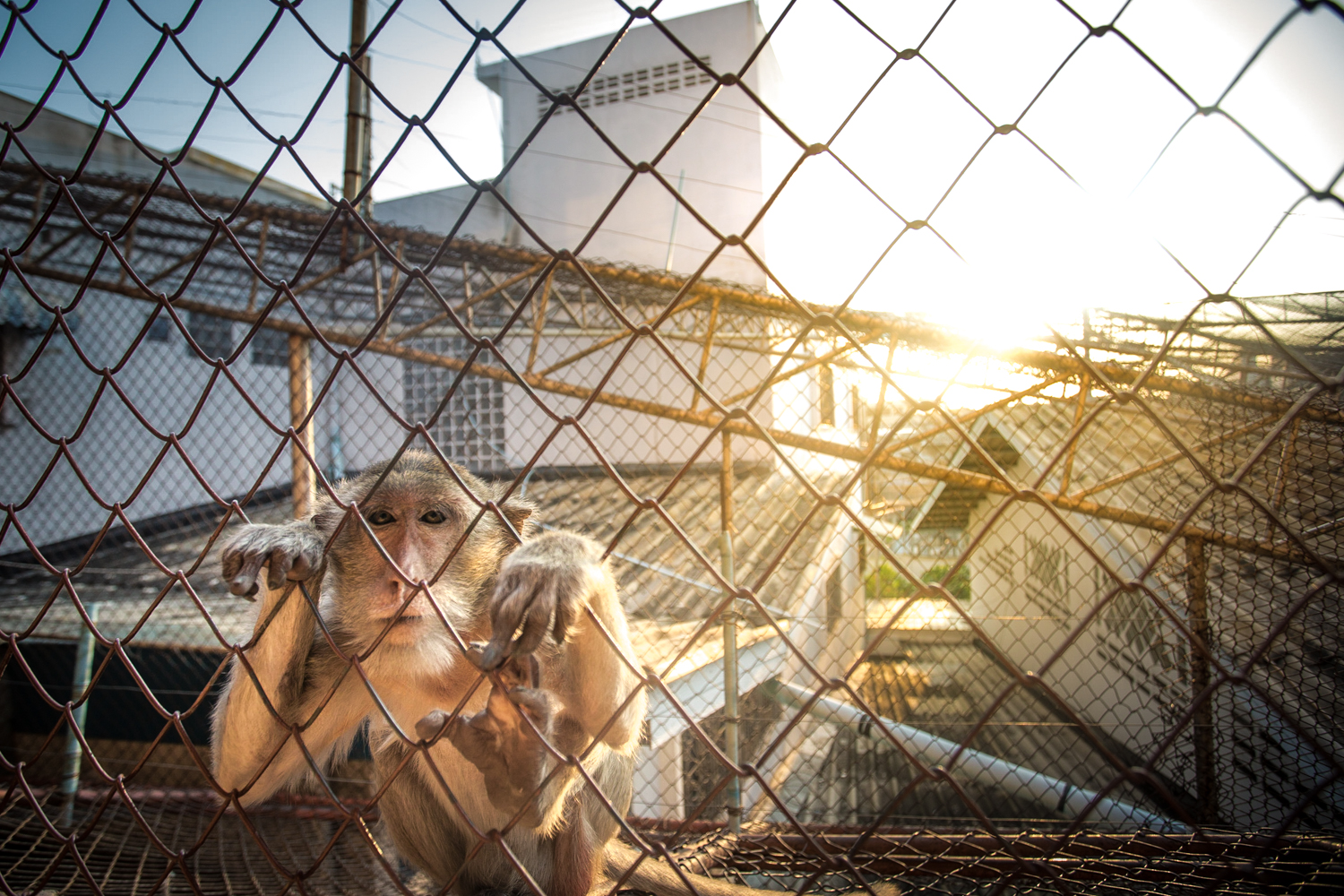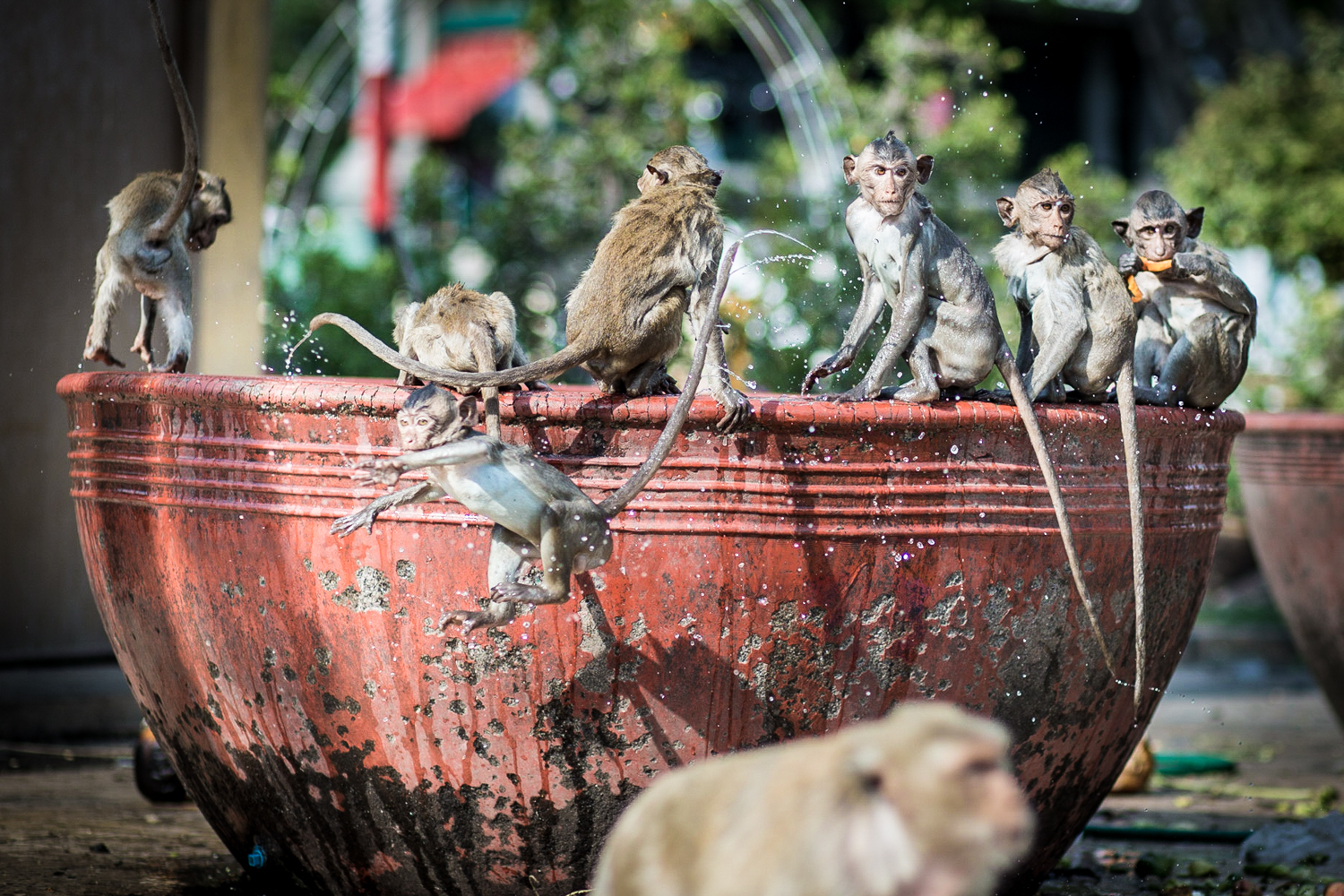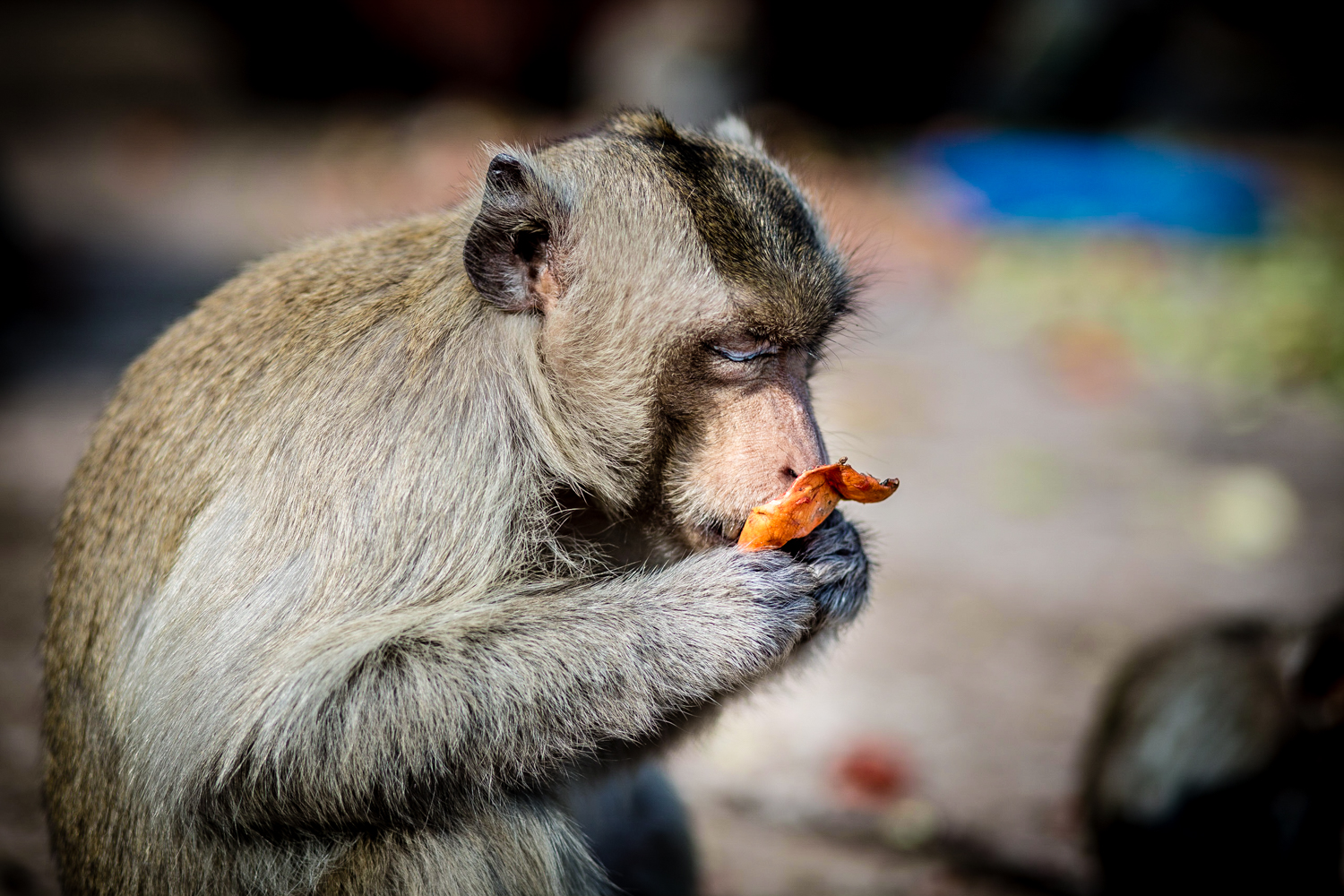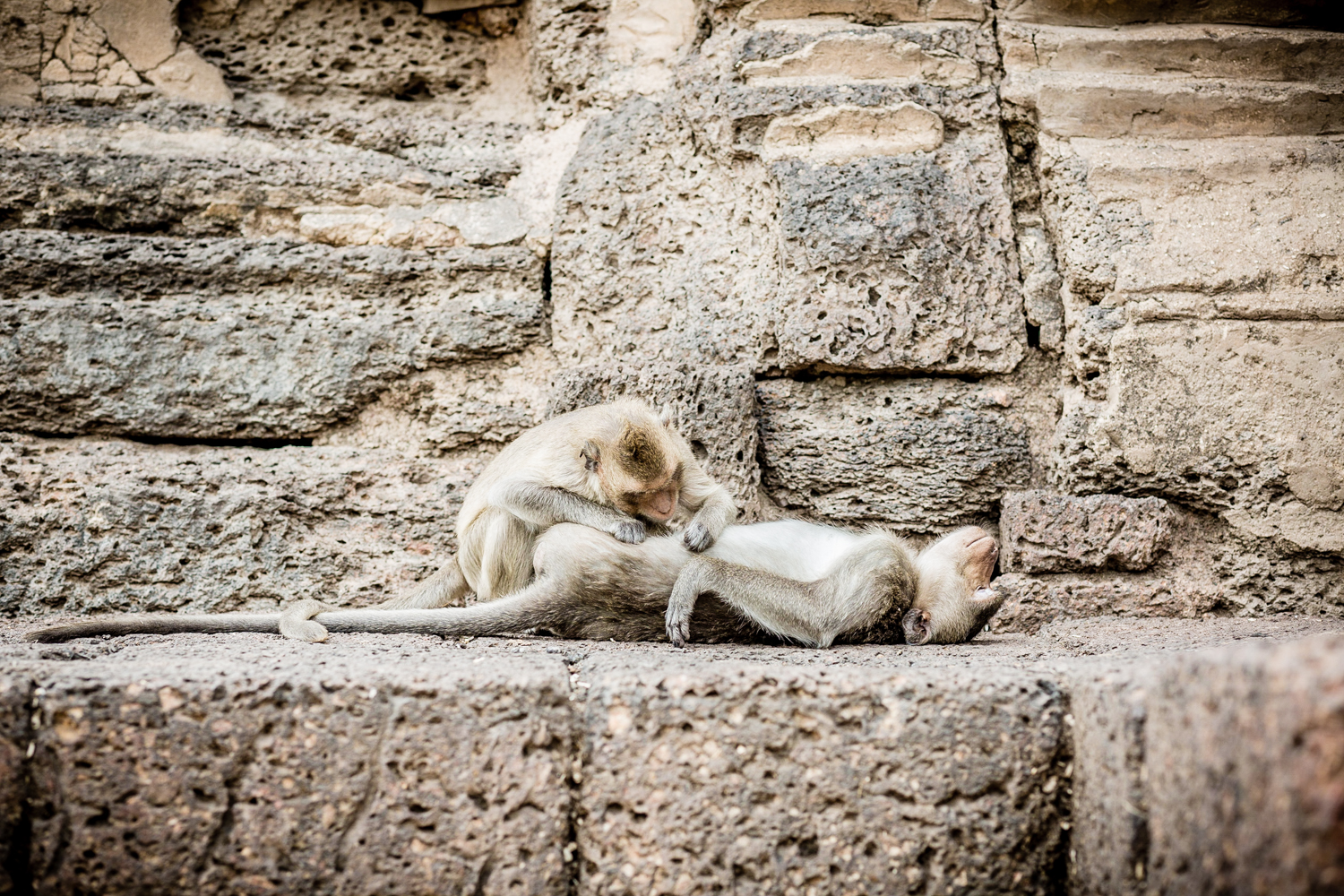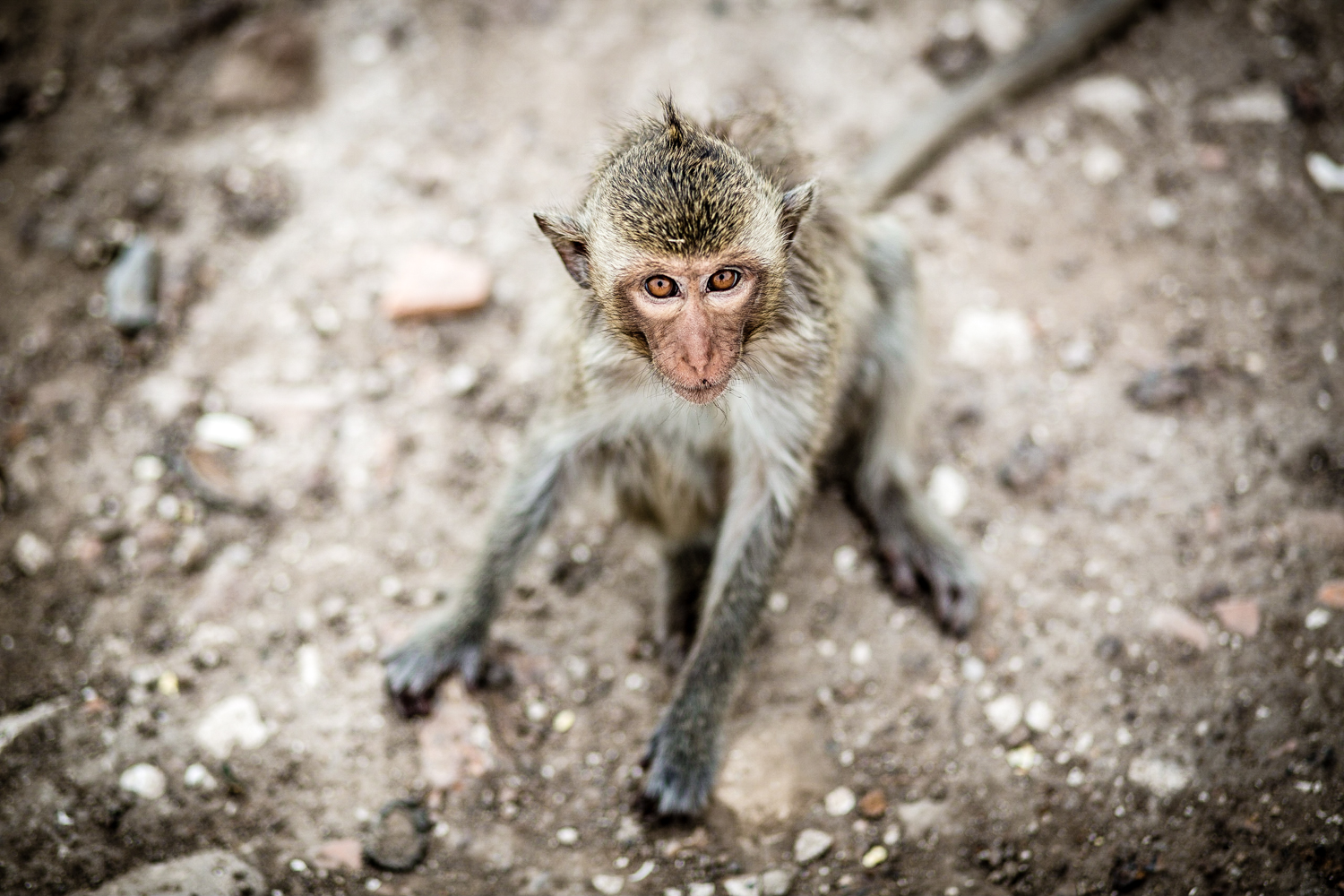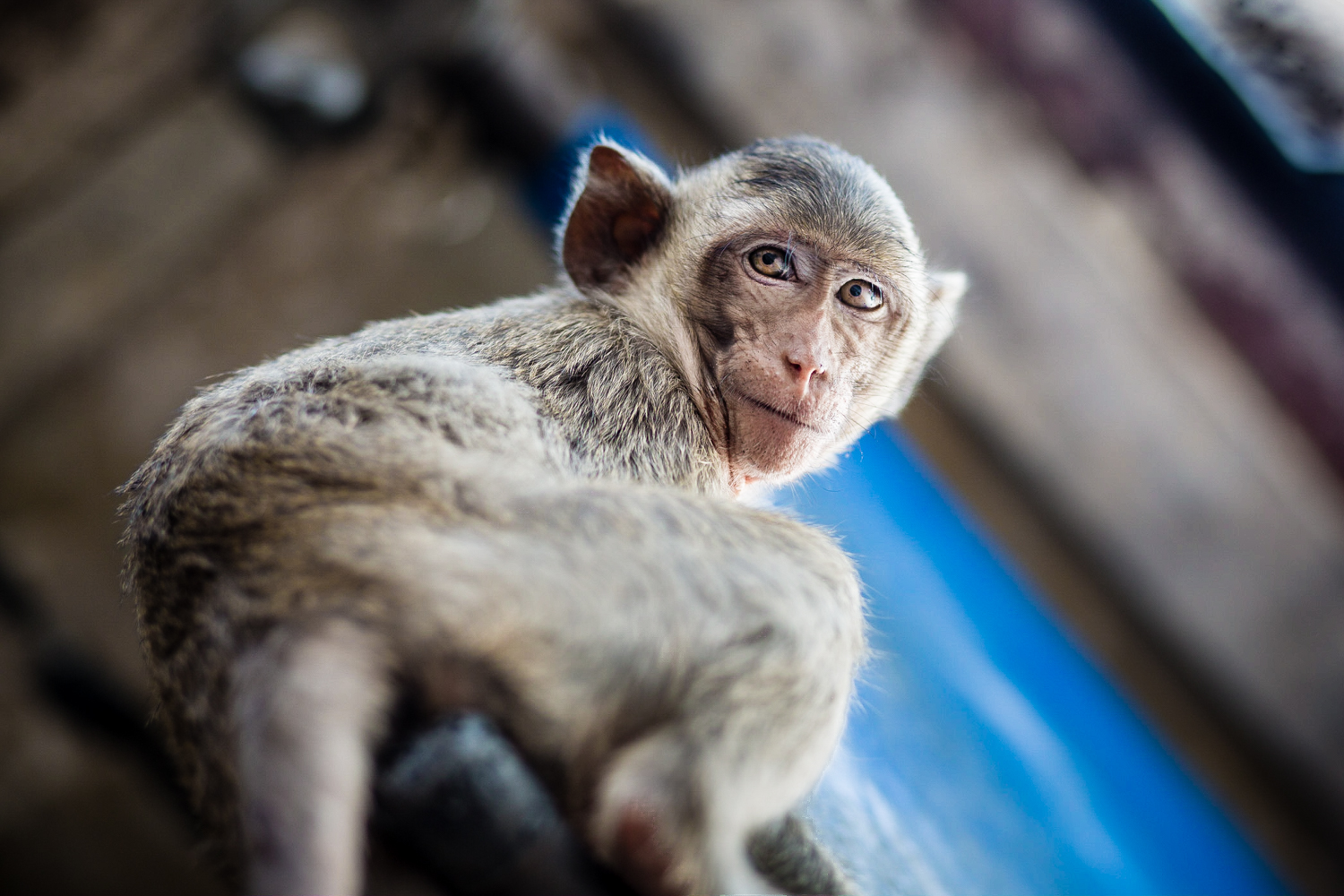Dates: April 3-4
Lopburi is one of Thailand’s oldest cities, developed during the Dvaravati period, circa 500-900 A.D. However, for most visitors to Lopburi, what remains today of its ancient architecture, is only a complement to the experience of the hundreds of rhesus and macaques permeating Lopburi’s streets and historic sites, which more than anything predicates Lopburi’s inclusion in the guidebooks.
The best place to watch and interact with the monkeys is Prang Sam Yot Temple in the center of town. The temple, which was original built by the Khmer as a Buddhist temple in the 13th century before later being converted for Shiva worship, has a resident troop of monkeys roaming the temple grounds. The mischievous monkeys are indeed cute, and are very curious of humans. The younger and more audacious ones will even climb on you, seemingly enjoying playing with clothing and investigating how bags are made. One even opened my bag and ran off with my hotel key! Fortunately, I was able to find it with the help of the temple groundskeeper, who acted like this was not the first time such a thing had happened. As we searched the temple grounds for my key, I wondered if their was a Thai version of the polish proverb, “Not my circus, not my monkeys”
Apparently the locals have also grown tired of putting of with the mischievous monkeys, and, although the monkeys attract tourists to Lopburi, some locals support a plan to relocate the creatures to a forest. (Since monkeys are believed to be disciples of the Hindu god, Hanuman, culling the monkeys would be out of the question.) The presence of the monkeys has also given rise to a prison-like infrastructure of buildings circumscribed by enclosures. For now though, the townspeople will have to continue to coexistence with their simian counterparts in strange reversal of fortune teaching humans what it feels to be gawked out from inside a cage.
I’m having trouble deciding which photos to post, so I’m just going to inundate you with monkey photos!
